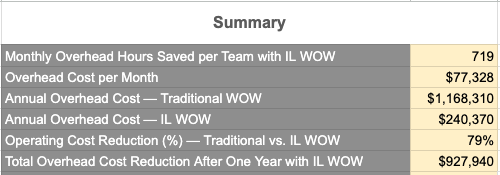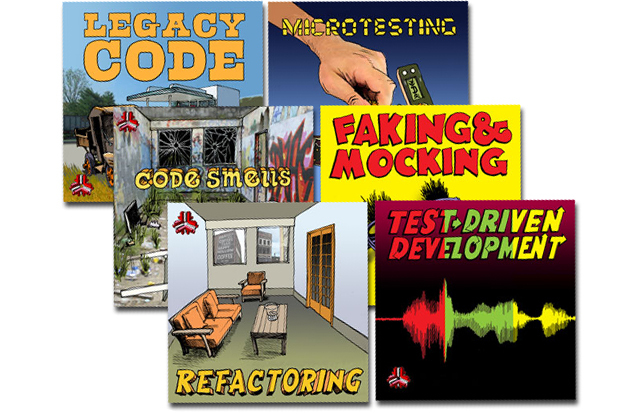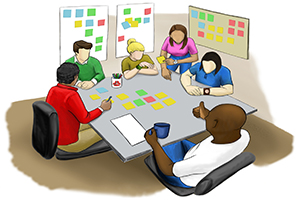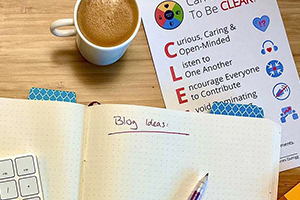How Teams Waste 700+ Hours/Month
By Wyatt Sutherland
Time is the most valuable resource for any software development team. Yet, despite the best intentions, teams lose over 700 hours per month—17+ weeks— to inefficiencies, unnecessary meetings, redundant processes, and outdated workflows.
If you’re feeling the strain of tight deadlines and overloaded sprints, you’re not alone. The good news? You can reclaim those lost hours—without hiring more staff or working overtime.
The Shocking Truth About Your Team’s Time
Many development teams unknowingly and habitually waste hundreds of hours each week on tasks that don’t contribute directly to delivering value. Here are some of the biggest culprits:
-
Unnecessary Meetings: Team members spend an average of 32 hours per month in meetings which could have been achieved with short sync-ups and improved ways of working (WoW).
-
Manual Processes: Repetitive tasks, such as code reviews, deployments, and regression testing, take hours to complete, while better working methods or automation could handle them in minutes.
-
Poor Workflows: Quality gates catch issues too late in the development cycle, resulting in significant rework, and overhead, costing your organization at least twice as much and often more.
-
Lack of Collaboration: Blockers, insufficient requirements, unknown acceptance criteria, handoffs, waiting on others, and unclear communication channels lead to confusion and costly delays.
-
Context Switching: Constantly jumping between tasks can reduce productivity by up to 40%, costing hours of lost focus daily.
How to Get Those 700 Hours Back
We at IL are a pragmatic group and know that reclaiming those lost hours doesn’t require drastic changes. Instead, we recommend a series of strategic adjustments that can yield significant time savings. Here are some simple recommendations:
-
Subdue the Meeting Monster
Evaluate your meeting schedule and eliminate or consolidate unnecessary gatherings. Use async communication tools like Slack, Teams, Loom, Discovery Trees, or project management platforms to replace long status meetings with concise updates. At IL we use Slack and Discovery Trees for our initiatives and apply The Law of Two Feet (leave meetings) if we’re not learning, or contributing.
Quick Win: Implement a “No-Meeting Wednesday” policy and watch productivity soar. After 3-4 weeks, add another No-Meeting Day. We find this approach highly effective and beneficial to our clients.
-
Automate Everything Possible
Leveraging automation tools for everything from CI/CD pipelines to automated testing and code formatting can drastically reduce manual workload and free up hours for meaningful work.
Quick Win: Use tools like Jenkins, CircleCI, or GitHub Actions to automate your build and deployment processes. Use an IDE with solid refactoring tools and use the tools. Too often we observe folks manually refactoring when their IDE is faster and not as error-prone as a human.
We’ve found in-IDE scanners like SonarLint help us find common issues and vulnerabilities during our code-editing sessions. These tools usually will not only mark the problem but also explain it so you can avoid it down the line.
Useful automation doesn’t have to be an expensive proposition. We get frequent small boosts in speed using simple tools like the gnext and gdone functions from Save Your Game or the prepare script described in The Clean Start Protocol.
-
Optimize Workflows
At IL, we believe building in quality early into your process is a critical step to achieve as soon as possible. You’ll want to emphasize shift-left testing during the coding phase for improved software quality, better tests and coverage, and faster time to market. This approach will reduce overlapping redundant tests usually found in teams that have a separate testing unit, and shift-left testing will help get the software to production with fewer escaped defects.
With many of our clients, we have seen test engineers writing code and in some cases, clients have added testers as full-time team members and eliminated their testing department.
Quick Win: Ask your testers to collaborate with the developers closely during design and development.
Gamify Testing: Challenge testers and developers to compete in fixing defects during the coding phase using leaderboards, rewards, or recognition to reduce defects found in the QA phase. HINT: Look into Stryker for automating your mutation tests to see insufficient test coverage.
-
Increase Collaboration
Another big source of wasted time is waiting on dependencies. Instead of simply managing these dependencies, focus on identifying your value stream partners. Rather than handing tasks off to another team or waiting for them—much like the principles of shift-left testing—aim to encapsulate your dependencies and work collaboratively through ensemble development.
If you’ve not experimented with ensemble development we recommend that you try. There’s a sweet spot ensemble size and it depends on the context. We’ve written many blogs on this modern practice. Visit IL’s blog posts to learn more.
-
Reduce Context Switching
Each switch costs time—often 15-30 minutes per switch, which adds up quickly.
Dedicate specific time blocks for deep mindful work and make sure folks know it’s non-interruptable time. This allows your brain to stay engaged in one type of task at a time.
Limit your Work in Progress (WIP) by focusing on fewer tasks at once. At IL we use a Kanban/Swarm board and WIP limits. Setting WIP limits will help avoid overloading simultaneous tasks and reduce interruptions; this approach requires discipline so try not to let the old habits creep back in. We also practice taking a short break about every 50-60 minutes so our thinking remains fresh and uncluttered.
Quick Win: Similar to “Subdue the Meeting Monster,” set aside a portion of each day where the entire team works on focused, uninterrupted tasks. Start with 2-3 consecutive hours in the morning and see if you can extend the length over time. Even a single day of deep focus can significantly boost productivity and reinforce the habit of reducing context switching. Communicate your intent with your manager so they support your efforts across the org.
Where Did 700 Hours Come From
Seven hundred hours might sound like an exaggeration, but when you break it down, it’s actually a conservative estimate for a seven-member team—a product manager, a designer, and a mix of developers and test engineers—working in a traditional software development model.
At IL, we refer to this traditional approach as Scatter-Gather—where engineers receive their assignments, work independently in silos, and then come together later to integrate their code into the larger system. While this approach might feel comfortable, it introduces inefficiencies at nearly every stage of development.
We’ve worked with hundreds of companies, and the vast majority still operate in a Scatter-Gather model without fully examining the hidden costs of their workflow. So, we did the math.
Our calculator accounts for time spent on Non-Value Tasks (NVTs)—things like coordinating meetings, knowledge sharing sessions, manual regression testing, integrating work, handling pull requests, hardening sprints, waiting on blockers, acceptance criteria validation, design clarifications, triage and bug fixing, etc.
For this blog’s example, we analyzed a team’s average weekly overhead, calculated as follows:
-
Each team member spends on average 28 hours per week on NVTs.
-
The team on average completes 10 features/stories/tasks per week.
-
Work goes through 5 quality gates, with a 90% pass rate at each gate.
-
Due to this compounding failure rate, 41% of tasks are returned for rework (calculated as 1-(90%^5)).
-
Each returned task requires 3 hours of rework on average.
-
That results in 4.1 returned tasks per week, leading to 13 additional hours of rework per week across the team.
-
Total weekly overhead in a traditional model:
-
Non-value tasks: 28 × 7 = 196 hours
-
Rework due to returned tasks: 13 hours
-
Total: 209 hours per week
-
Now, scaling up to a month:
-
The average number of weeks per month is 4.33.
-
Total monthly overhead: 209 × 4.33 ≈ 900 hours.
The Impact of an Optimized Approach
In contrast, teams that shift to optimized ways of working drastically reduce this overhead. When teams implement a streamlined workflow that minimizes handoffs, reduces waiting time, and improves collaboration, the average weekly overhead drops to 43 hours per team and better.
-
Optimized WoW total monthly overhead:
- 43 × 4.33 = 186 hours per month
-
Total waste prevented per month:
-
900 (traditional WoW) - 186 (optimized WoW) = 714 hours saved per month.
-
Rounding adjustments bring this to 719 hours of recovered productivity.
-
The Hidden Costs of Traditional Development
Using real-world data, we built the Way of Working – Waste Cost Value Calculator to quantify inefficiencies.
Why This Matters
Data doesn’t lie. Across teams we’ve analyzed, the cumulative impact of these inefficiencies exceeds 700 hours per month—the equivalent of nearly 18 full-time workweeks or hiring four additional full-time developers. But instead of throwing more people at the problem, the real solution lies in optimizing how work gets done.
By shifting to more streamlined ways of working, teams reclaim lost time, ship higher-quality software, and achieve more—without overtime, burnout, or budget increases.
The Bottom Line
Reclaiming 700 hours per month isn’t a fantasy—it’s achievable with the right approach. By eliminating waste, automating tasks, and optimizing workflows, your product delivery team can focus more on innovation and delivering value rather than getting bogged down by inefficiencies.
Want to put these strategies into action? Start small, measure progress, and watch your team’s productivity skyrocket.
Waste Cost Value Calculator (Traditional vs. IL WoW)
Cost Efficiency Gains with IL WoW: A Summary

This section showcases the substantial time and financial savings a seven-member team can achieve by shifting from a traditional WoW to an IL WoW. The calculations assume a team composed of a product manager, a designer, and a mix of developers and test engineers.
-
719 hours saved per month – Optimized workflows and reduced inefficiencies free up valuable development time.
-
$77,328 monthly overhead cost – The financial burden of inefficiencies in traditional WoW.
-
$1.16M annual overhead cost (traditional WoW) – The yearly cost of maintaining outdated processes.
-
$240K annual overhead cost (IL WoW) – A dramatic reduction in waste after IL WoW adoption.
-
79% reduction in annual operating cost – A significant efficiency gain per team.
-
$927,940 in annual savings: The projected cost reduction after one year of IL WoW implementation.
This breakdown highlights the massive potential for teams to improve efficiency, lower costs, and boost productivity by embracing modern, optimized ways of working.
From Waste to Efficiency: Cutting Overhead with IL WoW

This section highlights the time and financial costs associated with non-value-added tasks (NVT), delays, and inefficiencies in traditional workflows vs IL WoW.
-
209 hours of overhead per week → 43 hours per week: Teams operating under traditional workflows lose an average of 209 hours per week to inefficiencies. By adopting IL WoW, this is reduced to just 43 hours—a dramatic improvement.
-
75% of working hours lost → 15% lost: Under traditional WoW, 75% of available time is consumed by overhead, compared to just 15% when IL WoW is implemented.
-
$22,468 overhead cost per week → $4,623 per week: The financial burden of wasteful processes is significantly reduced, cutting weekly overhead costs by nearly 80%.
This data underscores how inefficient workflows eat away at productivity and budgets. By addressing waste, teams can reclaim valuable time and resources for more impactful work.
The Hidden Cost of Rework: Quality Control Inefficiencies

This section highlights how reducing unnecessary quality gates minimizes rework, streamlines processes, and accelerates delivery. By cutting down on redundant reviews and revisions, teams can improve efficiency, reduce wasted effort, and focus on delivering higher-value work.
🛠️ Tip: Build quality in up front rather than relying primarily on downstream verification.
Traditional Ways of Working:
-
Teams pass through five quality gates, each requiring approvals, reviews, and handoffs.
-
Despite a 90% pass rate, 41% of work still requires rework, adding 13 hours of returned work per week per team.
-
Multiple gates cause delays and waiting, leading to inefficiencies and bottlenecks.
IL Ways of Working:
-
The team works in an ensemble model, collaborating throughout development, eliminating the need for multiple gates.
-
Only one quality gate remains—customer or stakeholder approval when the product goes live.
-
With a 95% pass rate, only 5% of work requires rework, reducing overhead to just 1 hour per week per team.
-
This shift ensures that work is completed correctly in real time, avoiding unnecessary handoffs, approvals, and bottlenecks.
By adopting IL WoW, teams eliminate redundant approval steps, reduce delays, and significantly cut rework time, leading to faster delivery and higher-quality outcomes.
Before & After: Reducing Non-Value Tasks with IL WoW

This section highlights the significant reduction in non-value tasks (NVTs) achieved through IL WoW. By minimizing time spent in meetings, waiting, knowledge transfer, manual regression testing, and integrating work, teams can focus on high-impact tasks that drive innovation and efficiency.
-
Coordinating Meetings: Teams in IL WoW spend an average of just 3 hours per week, typically in 10–15 minute daily sync-ups. The end-to-end value stream is embedded within the team, minimizing external dependencies and distractions.
-
Time Spent Waiting & Knowledge Transfer: Whole-team ensemble development ensures continuous collaboration with zero to minimal interruptions, reducing workflow delays and unnecessary knowledge handoffs.
-
Integrating Work: Trunk-based, small-batch development with frequent integrations (multiple times per day) eliminates the overhead of complex, large-scale merges.
-
Manual Regression Testing: IL WoW embraces XP development principles, with engineers practicing Test-Driven Development (TDD) to build comprehensive automated test suites. Discovery testing is limited to a handful of manual tests, while mutation testing is automated using tools like Stryker.
Want To Calculate WoW ROI with Your Team or Group?
We’d be happy to spend a half-hour with you on a call to explore your context and calculate potential savings from better Ways of Working.




